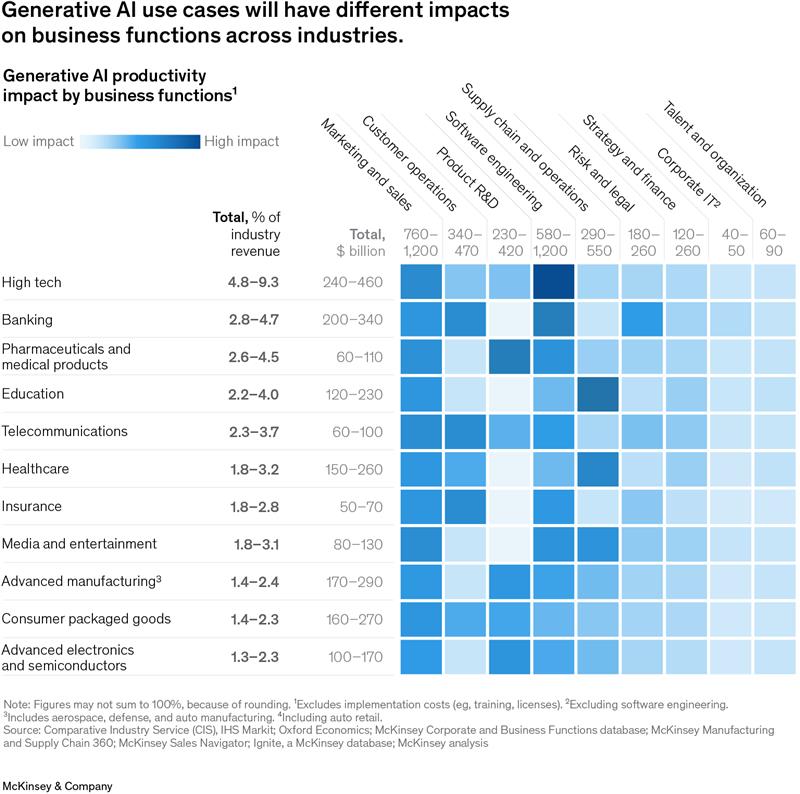Cloud-based backends are now a competitive advantage rather than an option. How you handle the backend can either speed up or slow down your roadmap, regardless of whether you’re developing mobile apps, customer portals, or integrations with platforms like Salesforce Marketing Cloud (SFMC).
Backend-as-a-Service (BaaS) is useful in this situation. BaaS offers a ready-to-use backend infrastructure for businesses undergoing CRM migration, creating digital customer journeys, or outsourcing development, allowing you to concentrate on the customer experience rather than server setup.
This blog will explain what BaaS is, highlight popular platforms such as Firebase, Supabase, and Hasura, and assist you in determining if it’s the best option for your company.
What Is Backend-as-a-Service (BaaS) And What Are The Benefits?
A cloud solution known as Backend-as-a-Service (BaaS) relieves developers of the burden of creating necessary backend components from scratch, including databases, APIs, user authentication, and file storage.
Advantages of Backend-as-a-Service for businesses:
- Accelerated Cycles Of Development: BaaS enables developers to focus on creating the essential features of your app instead of setting up backend servers. This drastically cuts down on time-to-market, which is essential for quicker campaign, portal, or digital product launches.
- Lower Maintenance And Infrastructure Costs: BaaS eliminates the need for a full-time DevOps team and round-the-clock server management. Cloud providers handle updates. Along with scalability and backend maintenance. This frees up resources for innovation.
- Built-in Scalability For Expansion: BaaS platforms automatically scale to meet your usage requirements, regardless of how many users you’re serving, 1,000 or a million. Without requiring manual intervention, this elasticity helps prevent service interruptions during periods of high usage.
- Enterprise-grade Security And Compliance: The majority of top BaaS platforms include encrypted data storage, pre-configured security protocols, and compliance with SOC 2, GDPR, and HIPAA, which lowers your regulatory risk.
- Faster Integration With Front-end And CRM Systems: BaaS provides ready-to-use SDKs and APIs that seamlessly integrate with enterprise systems like Salesforce, Stripe, or Twilio as well as contemporary front-end frameworks, keeping your tech stack connected and flexible.
When Should You Use BaaS For Your Business?
Not all use cases call for a unique backend. BaaS is more financially and technically sound for a large number of mid-sized and enterprise businesses.
Situations where Backend-as-a-Service makes a difference:
- You’re Launching A New Customer Portal Or App: Whether you’re building a dashboard for logistics, a patient portal for healthcare, or a retail loyalty app, BaaS enables you to build and deploy more quickly without having to start from scratch.
- Your Work Is Distributed Globally Or Is Outsourced: When working with remote teams, freelancers, or outsourcing your development, BaaS minimises time zone delays and guarantees consistency and security.
- You Are Conducting A Proof Of Concept (POC): BaaS is ideal for rapidly and cheaply validating ideas. Create and test internal tools or MVPs quickly, then scale them after they’ve been validated.
- You Are Implementing SFMC Or Migrating CRM: BaaS tools help you modernise without downtime by providing real-time data pipelines and APIs that can push and pull customer data across new CRMs like Salesforce Marketing Cloud and legacy systems.
- Your IT Staff Has Too Many Infrastructure-related Tasks To Handle: By removing the burden of backend setup, monitoring, and security, BaaS frees up internal teams to concentrate on what matters, the customer experience.
What Are The Best BaaS Platforms In 2025, Like Firebase, Supabase, And Hasura?
Did you know that your use case, technical preferences, and industry all play a role in selecting the best BaaS platform? The top three BaaS providers utilised by enterprise teams are broken down here.
1. Google’s Firebase
A real-time backend platform, Firebase is perfect for live user interactions and mobile applications. It is a solid option for rapidly expanding companies due to its extensive integration with other Google Cloud services.
Why go with Firebase?
- Real-time NoSQL Database (Firestore): Firestore is a real-time NoSQL database that allows data to be instantly synced across devices for tracking dashboards, live chats, and real-time collaboration.
- Prebuilt User Authentication: Prebuilt user authentication is completely safe and scalable. You can quickly add login options using Google, Facebook, Apple ID, or custom email/password flows.
- Cloud Functions: Create and implement backend code without having to worry about server management, ideal for adding business logic or automated tasks.
- Analytics And Push Notifications: Use integrated Google Analytics to track user interactions while engaging users with in-app messaging.
Firebase supports more than 3 million apps globally, according to Statista (2024).
2. Supabase
Built on top of PostgreSQL, Supabase is an open-source substitute for Firebase. Businesses that desire SQL, total data control, and the option to self-host if necessary will find it ideal.
The rationale behind selecting Supabase:
- Structured Relational Data: PostgreSQL, which is used for structured relational data, allows for sophisticated queries and joins, making it perfect for enterprise-level dashboards and reporting.
- Real-time Updates And API Generation: You don’t have to create your endpoints because it automatically creates RESTful and GraphQL APIs that support real-time subscriptions.
- Row-level Security And User Authentication: Provides flexible access control through policies that can protect private user information down to the record level.
- Open-source And Self-hostable: Supabase lowers the risk of vendor lock-in by providing the option to use their managed service or host your infrastructure in your own cloud.
Supabase raised $80 million in its Series B (2024) offering evidence of its robust enterprise adoption.
3. Hasura
Hasura instantly converts your PostgreSQL database to a GraphQL interface, making it an effective tool for teams that depend on microservices and APIs.
Why go with Hasura?
- Auto-Generated GraphQL APIs: Get a fully functional API that supports queries, mutations, and subscriptions right away, saving months of backend work.
- Granular Permission Systems: These are perfect for platforms with enterprise or multi-user permissions because they allow you to define access rules according to user roles.
- Quick Integration With Databases Already In Place: Without having to move or modify your current architecture, you can quickly integrate Hasura with your current data systems.
- Webhooks And Event Triggers: Use event-driven architecture to automate backend logic, which helps sync third-party systems, notifications, and approvals.
Every day, Hasura facilitates more than 500 million API requests worldwide.
What Are The Top BaaS Use Cases In Retail, Fintech, Logistics And Healthcare?
Here are some ways that BaaS platforms are resolving backend issues in significant sectors:
A. Retail
- Loyalty and reward apps use Firebase to send customised offers, sync points, and engage users in real time.
- Supabase-built store dashboards monitor customer behaviour, inventory, and store performance in real time.
- Hasura’s headless APIs are used by promo and coupon engines to dynamically offer customised discounts.
B. Fintech
- Supabase’s strong auth system is used to securely build user onboarding and fintech KYC processes.
- Firebase’s real-time database and push notifications provide instant access to transaction histories and alerts.
- Hasura’s GraphQL layer effectively manages APIs for compliance reports or data visualisation.
Logistics
- Firebase is used by logistics fleet tracking systems to give delivery teams real-time GPS and status updates.
- Supabase-built warehouse portals facilitate order processing, inventory management, and shipment tracking.
- Hasura-created partner access APIs let outside vendors safely connect to your logistics platform.
C. Healthcare
- Supabase’s secure database and authentication power healthcare patient portals with scheduling, messaging, and login features.
- Firebase’s real-time syncing and caching capabilities are essential for field-use, offline health apps.
- Hasura’s row-level permissions are used to enforce role-based access to private medical information.
According to Forrester, by 2025, 72% of enterprise mobile apps will have a cloud-based backend.
Why Is BaaS Ideal For CRM Migration And Digital Transformation?
Agile digital transformation is made possible by BaaS as companies transition from outdated CRMs like Salesforce to more contemporary ones.
BaaS facilitates CRM modernisation in these ways:
- Smooth Data Synchronisation: Real-time personalisation is ensured by BaaS tools’ ability to push or pull data between your frontend apps and Salesforce Marketing Cloud.
- Backend Logic Separation: To prevent your marketing platform from becoming overloaded with backend logic, store customer rules and workflows outside of SFMC.
- Custom App Development: To improve your CX capabilities, create mobile-first tools that can read and write CRM data via Hasura or Supabase-managed APIs.
- Campaign Speed: Without relying on internal IT cycles, launch interactive landing pages or micro-apps powered by Firebase or Supabase.
What Should You Consider Before Choosing A BaaS Provider?
Selecting the best BaaS platform requires more than just features; it also requires fit.
Crucial elements of evaluation:
- Security And Adherence: Assure compliance with SOC2, GDPR, and HIPAA if you deal with regulated or sensitive data.
- Scalability: To prevent performance snags, seek out well-established platforms that enable auto-scaling as your app expands.
- Integration Ecosystem: Look for native or simple integration with any marketing automation platform you use, such as Salesforce, Stripe, Auth0, or others.
- Comparing Open Source And Vendor Lock-in: Think about whether you prefer managed services (Firebase) or complete control (Supabase, Hasura).
- Transparency Of Cost: Examine pay-as-you-go and subscription pricing structures, and ensure that you are not caught off guard by any hidden storage or API call limits.
How Does MetroMax Solutions Help You Leverage BaaS?
Our speciality at MetroMax Solutions is assisting businesses in strategically utilising BaaS to achieve their goals. We can help you launch digital products, scale your CRM, or optimise your marketing stack. We offer:
- Choose and use the best BaaS provider for your requirements.
- Connect Salesforce Marketing Cloud to Firebase, Supabase, or Hasura.
- Create scalable, safe applications and portals that expand with your company.
- Provide dependable backend architecture to support outsourced development teams.
- Assure dependability, speed, and compliance right away.
Let us take care of the backend so that you can concentrate on customer success.
Conclusion
In 2025, Backend-as-a-Service is a growth enabler rather than merely a developer shortcut.
Platforms like Firebase, Supabase, and Hasura can provide the backend speed and dependability your company needs if it needs to support a hybrid tech team, scale quickly, or improve customer experiences.
And you don’t have to do it alone by getting professional advice from MetroMax Solutions.



